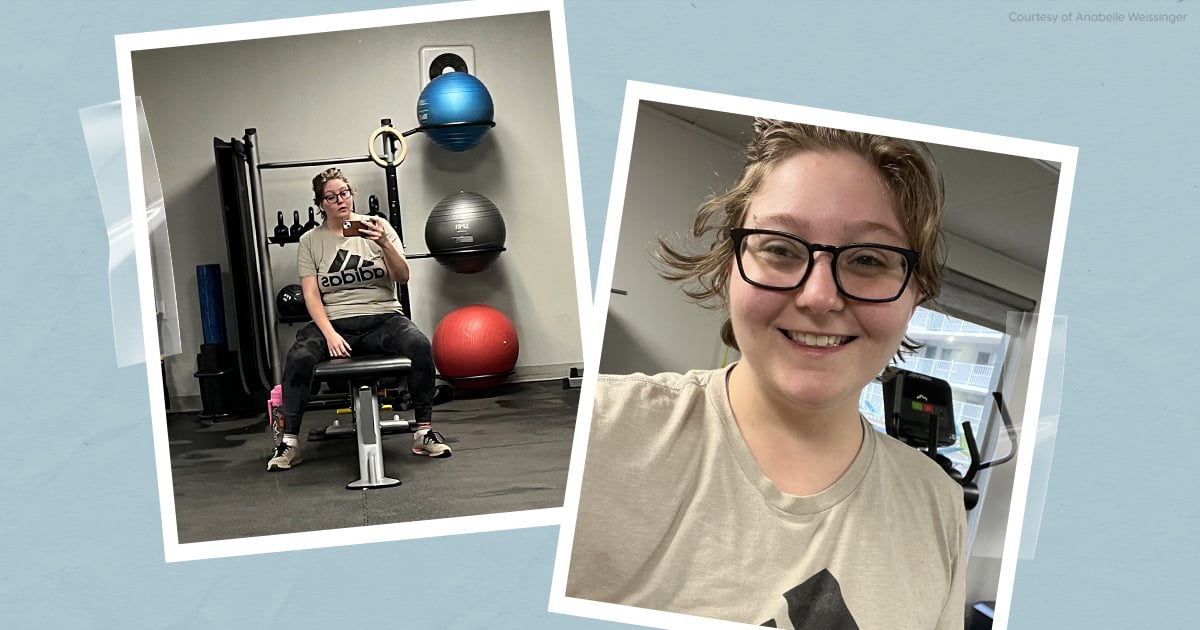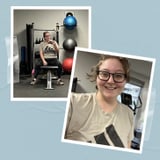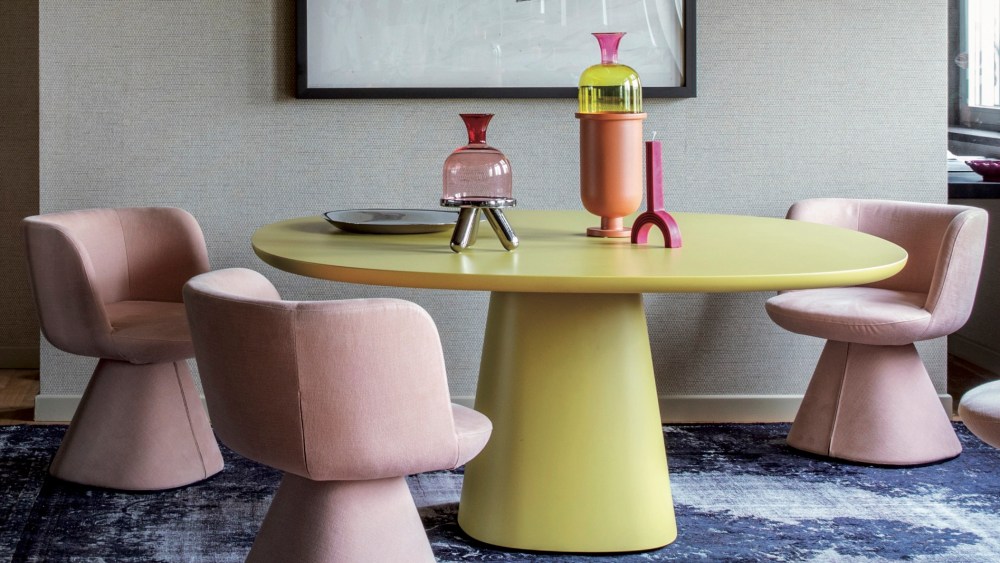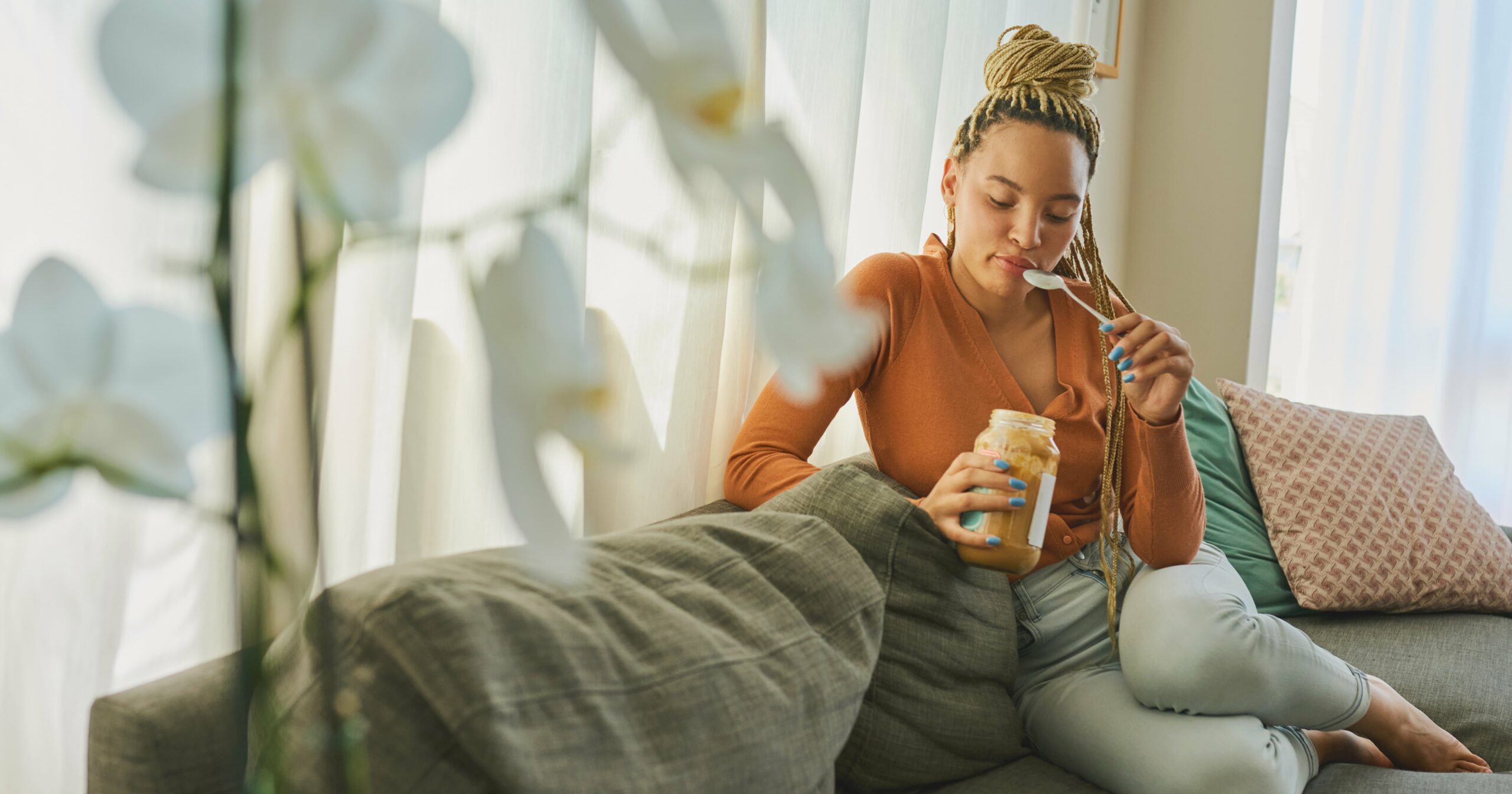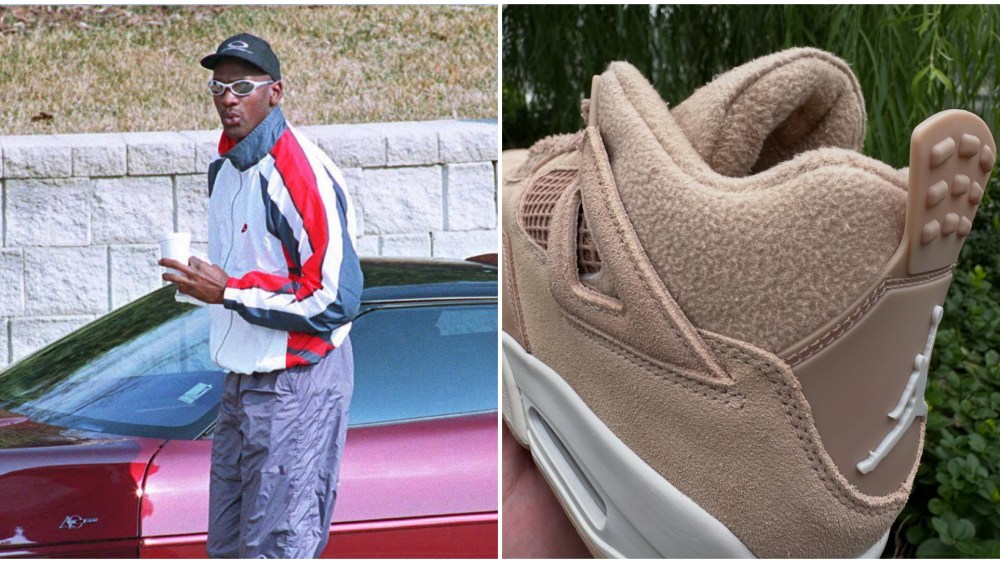At the start of 2024, I was faced with the same dilemma I encounter every new year: should I add working out to my list of resolutions?
As a plus-size nonbinary person, the answer isn’t as simple as I’d like it to be. The idea alone set off panic in my chest that was at once terrifying and familiar.
For years, I’ve wanted to move my body and connect with my physical form in a grounded, affirming way. I’ve craved to feel at home, to relish the warm strain of sore muscles, to get stronger every week. But as much as I’ve wanted to repair my anxiety-inducing relationship with the gym, I wasn’t sure until recently if it was possible.
That’s despite the fact that, for the first time, I feel like I have complete autonomy and control over my life and my body. I’m in a gender-affirming T4T relationship; no one is trying to push diets on me to make me smaller; and my chest doesn’t give me as much dysphoria when I’m around my queer community.
“As much as I’ve wanted to repair my anxiety-inducing relationship with the gym, I wasn’t sure until recently if it was possible.”
Still, we’ve been through a lot together, this body and me. Dysphoria and dysmorphia overtook my teenage years. It was worsened by constant reminders that I was bigger than my peers, despite my best efforts to simply stop eating the things my father said made me heavy.
Those memories still feel fresh. It starts in the fifth grade. I run on the unpaved grass track that circles our school’s football field, the first lap of the four that will make the mile I’m assigned. I don’t have any friends to run with because all my friends are boys. I hate every minute of this separation, from the girls’ locker room and the gendered workouts to the loneliness and feeling of being misplaced.
My ankles ache with the stress of not being taught how to place themselves properly on the uneven ground. My boobs have grown in the last year, and they simply won’t stop. I basically have two medicine balls strapped on my chest, bouncing painfully in the sports bra digging into my ribs. I push myself until I reach the end of the first lap, gasping and grabbing my side to shamefully walk the last three laps.
I wonder if these laps are for our own good. If they’re supposed to make me healthier, then why do my ankles feel like they’re about to snap? Why am I always inches from frustrated and humiliated tears by the time the exercise is over?
Months later, I start martial arts. Here, they don’t treat me like a girl, or assume I’m weaker than my male cousin, or make jokes about the way I punch. At least, not at first.
For years, I’m empowered in a way that I’ve never been. But once, I make the mistake of wearing a tank top underneath my uniform the night we work on shirt grabs, and I’m told to wear higher-necked under-layers with the disdain reserved for children with adult breasts.
Even here, in this supposedly gender-neutral space, I’m constantly reminded that my body is innately feminine, and I can’t figure out why it feels so wrong. It doesn’t help when my instructors go out of their way to humiliate me in front of the class, even as I take on a leadership role.
The last bits of enjoyment I get from martial arts dissolve into dust. When I leave town for college, I know I’ll never return to the dojo.
In the years since, I’ve slowly worked my way back to moving my body through self-guided yoga and basic exercises. Each time I try, the mental gymnastics of convincing myself to start (and stop) wears me out more than the physical movement itself. I push too hard, I hurt myself, and I lose my motivation all over again.
I wanted this year to be different. This time, I wanted to work out because it felt good, not because I had to. I wanted working out to be its own reward, not the source of my self-worth.
It was Body by Daddy on Instagram that showed me that exercise doesn’t have to be a punishment. Her workouts are designed for the LGBTQ+ community, and her emphasis is on feeling good in your body – not beating yourself into the shape you think you should have. I was inspired to try again, but on my own terms, keeping joy and gender euphoria as the focus.
The first time I ventured back into my apartment’s small gym, I gave myself permission to leave whenever I needed to. I spoke softly to the wounded animal of my body, keenly aware how easy it would be to spook myself off. If those familiar hot-and-cold flashes of panic rose up, or if those images of public humiliation invaded my brain, I would stop and give myself the space to deal with it, instead of pushing through and dealing with the fallout later. Otherwise, I knew, exercise would just become punishment again, instead of an intentional way to spend time with my body.
I’ll be excited about the things I can do, I promised throughout my workout. I won’t become another coach or sensei who wants me to be more than I am, who shames me for not being as good as I “should” be.
“Here, in this truly gender-neutral space, I can direct my own workouts.”
Somehow, I kept myself from fleeing when another person entered the small space, then another. By the time I ended my first session, I didn’t feel like everyone was staring at me or that they could tell I didn’t belong because I ran out of breath easily and my body jiggled.
I have struggled, especially with cardio, but mostly, I’m feeling excited and invigorated in a way I didn’t think I could. And I keep going back. Now, I raise the incline of the treadmill to build strength in my ankles, and stop when I need to with no judgment or shame. When I hit the end of my growing stamina, I break it up with planks, squats, and core workouts, all movements that engage my neurodivergent brain and are easy to switch between when I get bored.
I still have to navigate negative thoughts around working out. I regularly need to remind myself that I’m not exercising to lose weight. I’m not a failure if I skip a day or even a week, and taking a break doesn’t discount everything I’ve accomplished so far or mitigate everything I can do in the future. But here, in this truly gender-neutral space, I can direct my own workouts in a way that isn’t feminine or masculine. Instead, I can focus on the areas that make me feel most euphoric – building muscles in my biceps and back to achieve my buff butch dreams, developing my thighs to carry my girlfriend around more easily, and doing joint-strengthening exercises that make me feel more secure and at home in my body.
I’m continually amazed at how good I feel for the rest of the day after a morning workout, however short and light. It gives me joy and an energy I didn’t think could be accessible to me.
My body is mine, and so is the way I choose to move it.
Anabelle Weissinger is a nonbinary freelance writer and the managing editor of EcoCult. Their work focuses on health and wellness for the LGBTQ+ community, sustainability, and conservation. They have written articles on a variety of topics, including binding safety, transmasculine identity, and neurodiverse dating.
